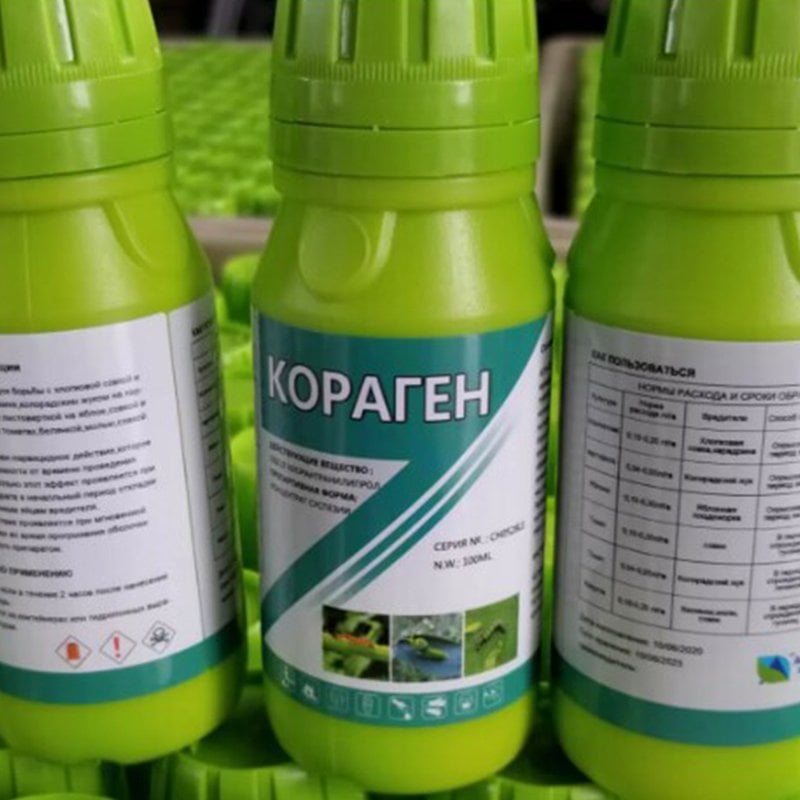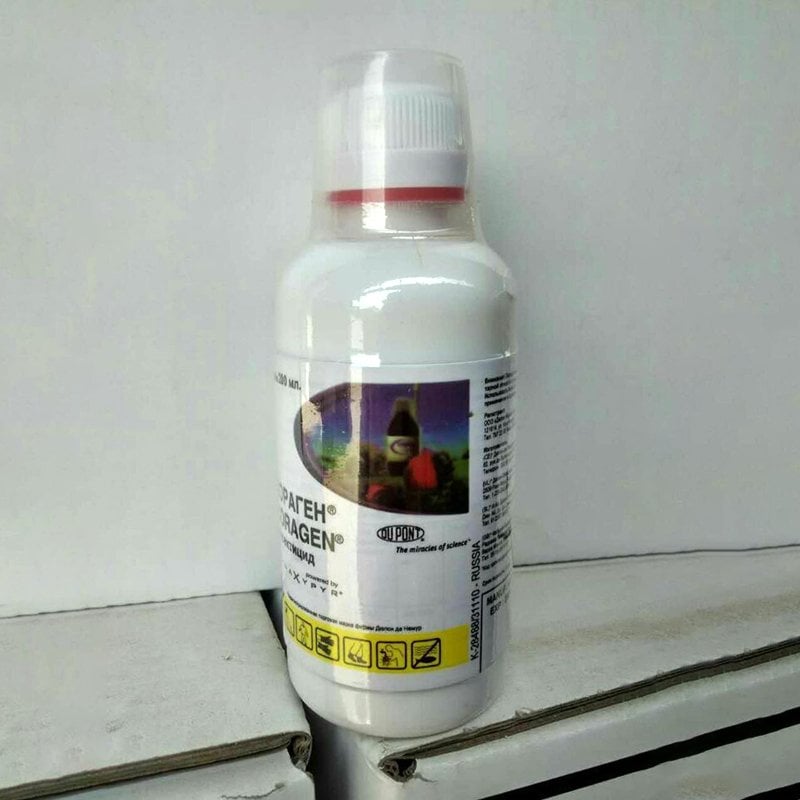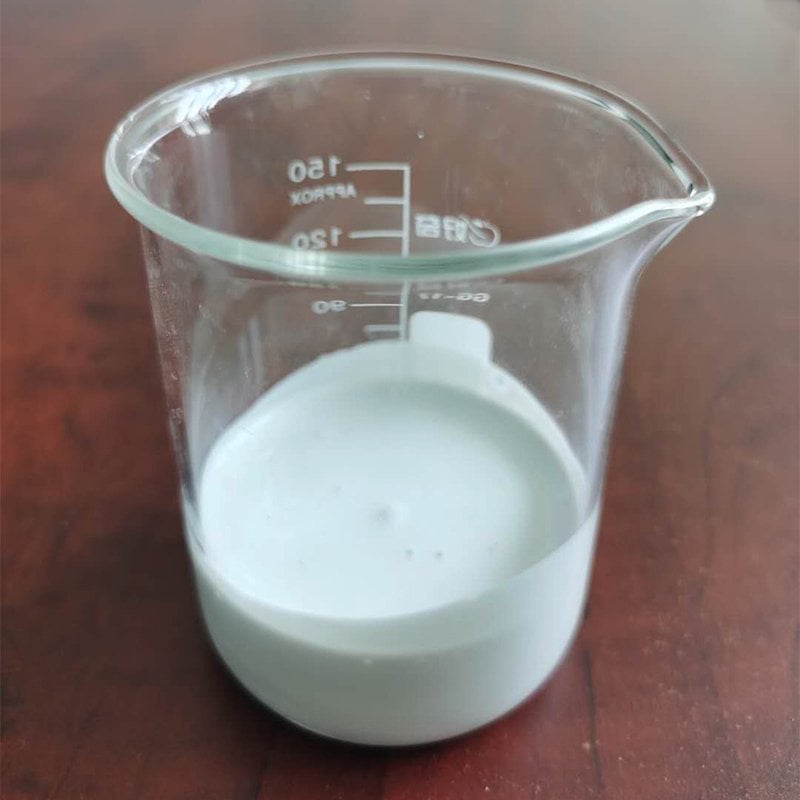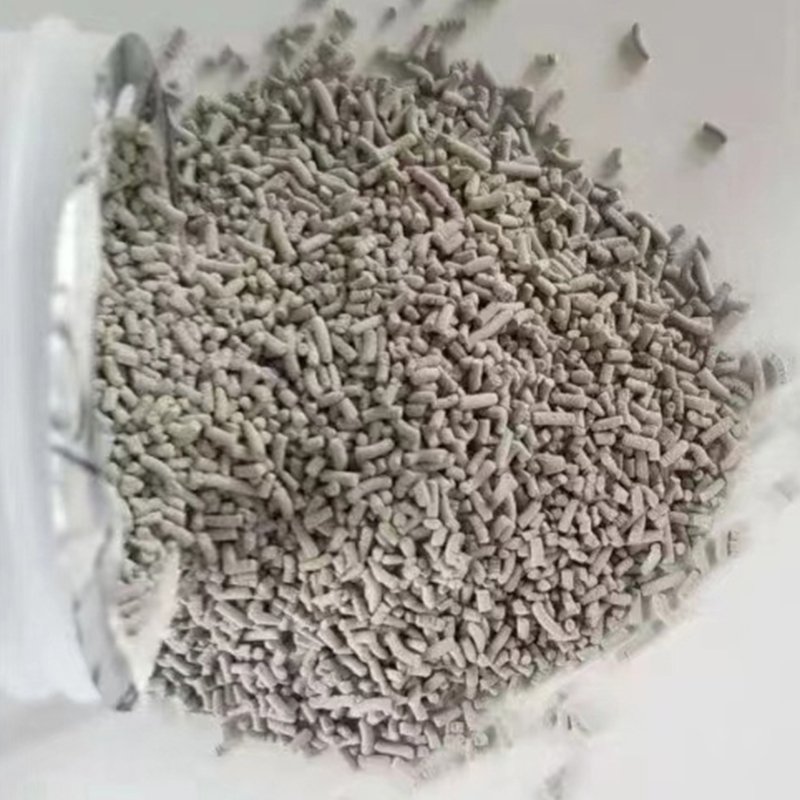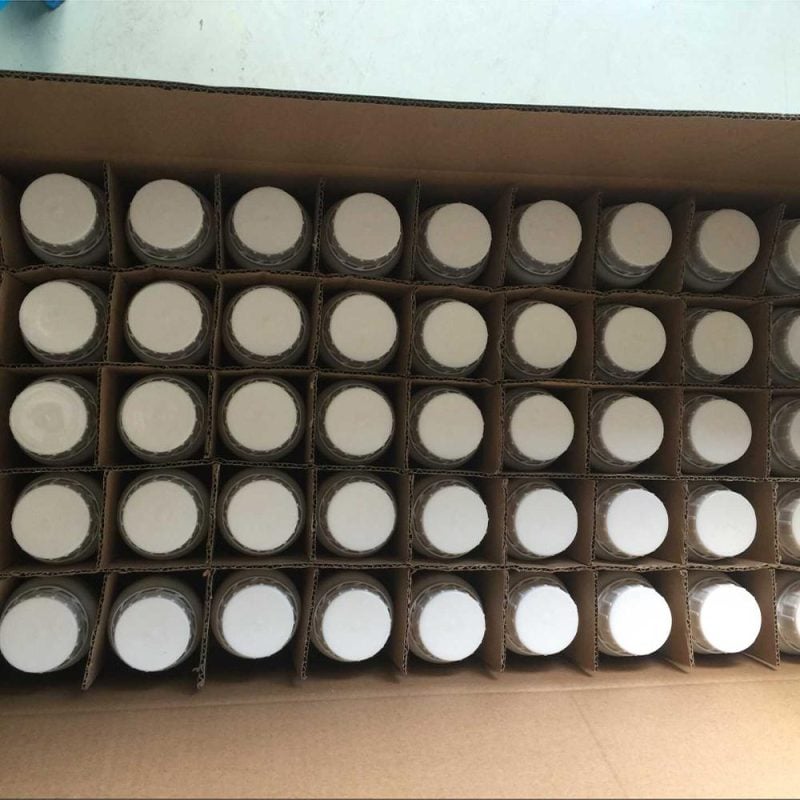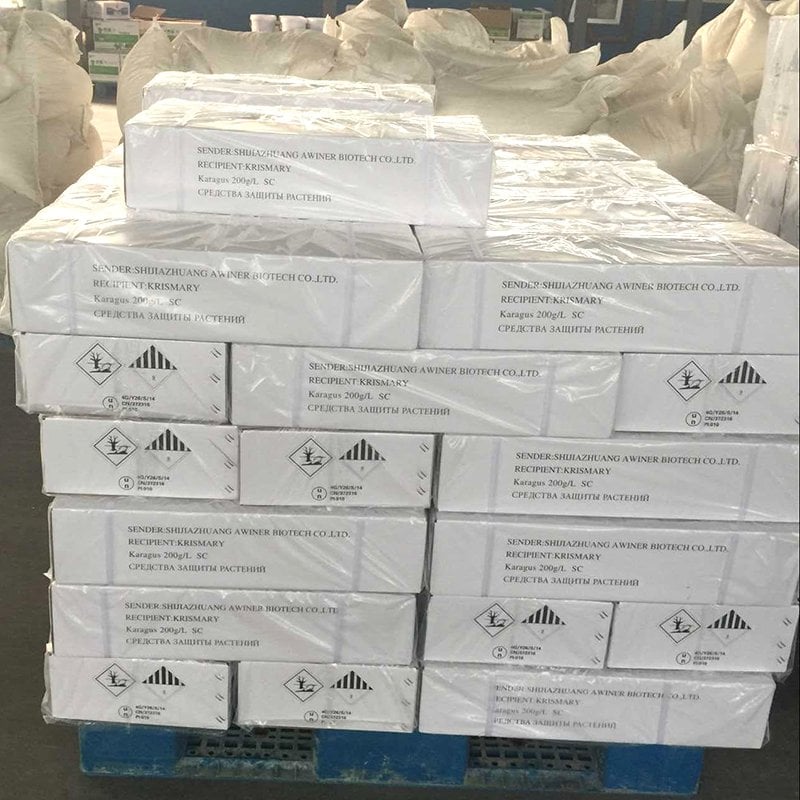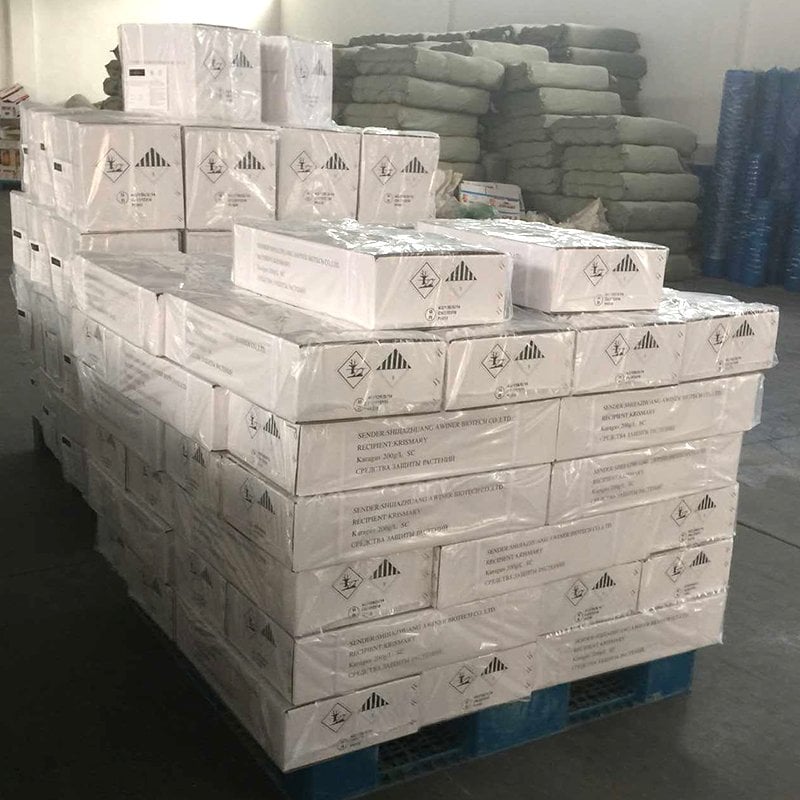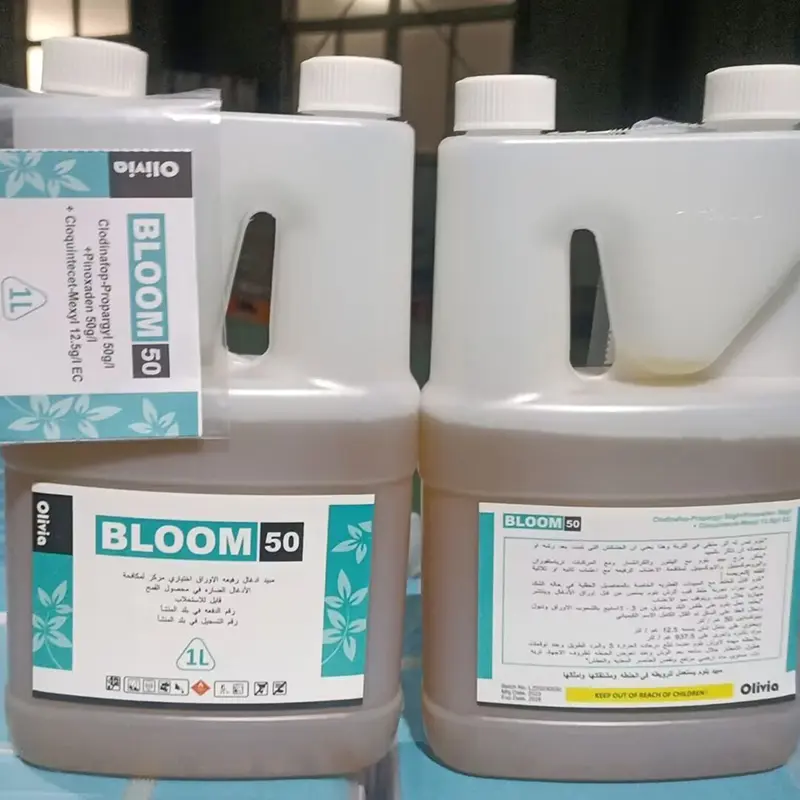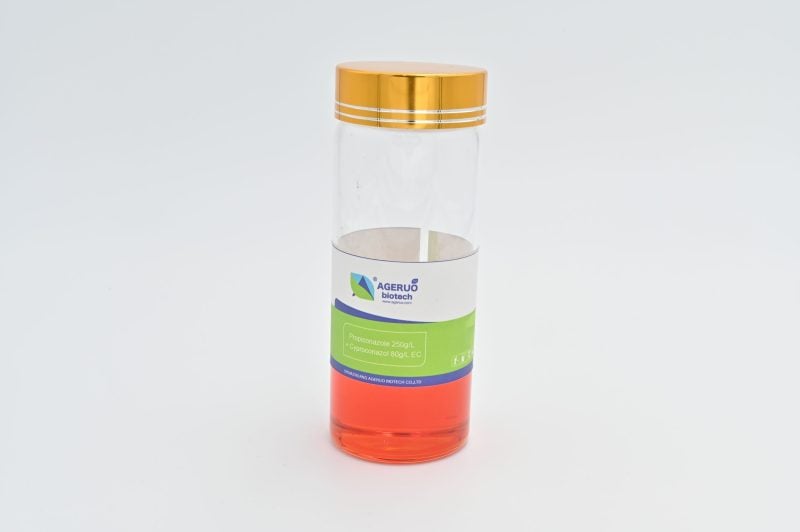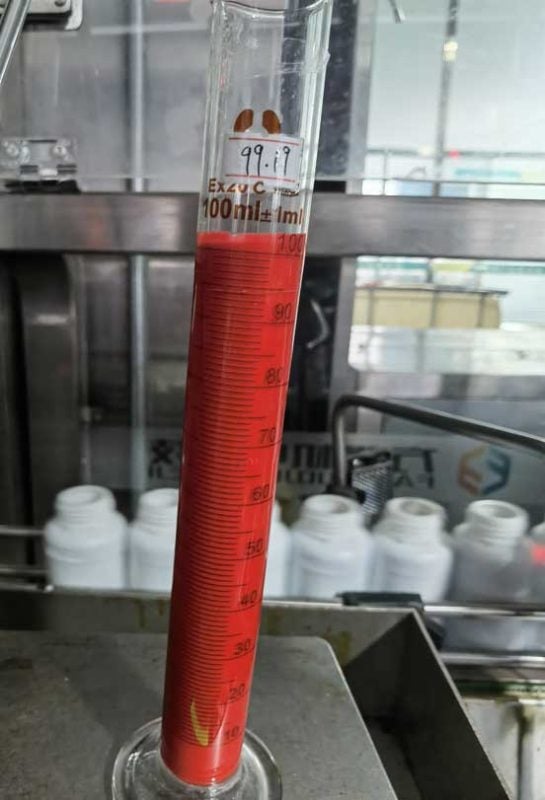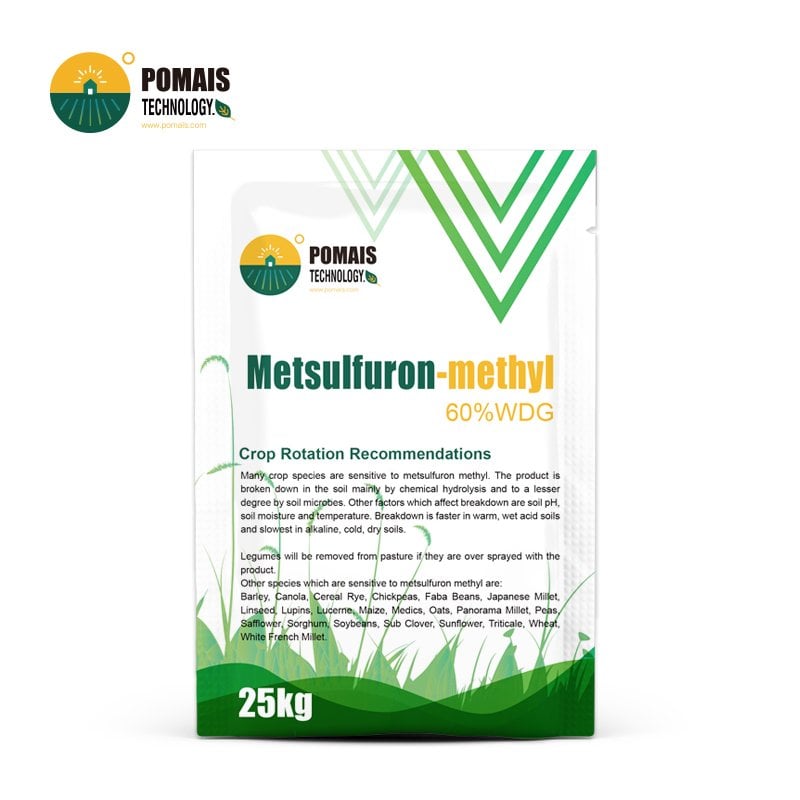Chlorantraniliprole 18.5%SC, 200 g/l SC Insecticide Products
Chlorantraniliprole 18.5%SC, 200 g/l SC Insecticide Products is a new phthalamide insecticide known for its high efficiency and broad-spectrum insecticidal effect, which is particularly suitable for the control of chewing pests such as caterpillars and beetles, as well as some stinging pests such as thrips. It has been widely used for pest control of crops such as rice, maize, cotton, sugarcane, vegetables and fruits in many crop protection programs.
The unique mechanism of action of chlorantraniliprole insecticide interferes with the muscle function of the insect by affecting its receptor Reynoldin, leading to paralysis and eventual death of the pest. Its ability to work through both the stomach and touch pathways and its long-lasting residual protection properties provide durable crop protection, making it an ideal choice for farmers looking for efficient and safe pest management.
- Designed for Professional Buyers & Bulk Orders
- This product is available for business purchase and large-scale distribution.
- We support custom packaging, labeling, and formulation to meet your market needs.
- Let’s build your brand together.

About Chlorantraniliprole 18.5%SC, 200 g/l SC Insecticide Products
About Chlorantraniliprole 18.5%SC, 200 g/l SC Insecticide Products
| Active Ingredient | Chlorantraniliprole |
| Classification | Insecticide |
| Formulation Type | 18.5% SC,200g/l SC, 250g/l SC |
| Target Crops | Rice, Vegetables, Fruits, Maize, Corn, Cotton, Sugarcane |
| Target Pests | Lepidoptera (Caterpillars), Beetles, Thrips, Borer, Armyworm, Bean pod borer, Cotton bollworm, Rice leaf roller |
| Mode of Action | Disrupts muscle contraction in pests by activating ryanodine receptors, leading to paralysis and death |
| Dosage | Rice: 150-200 ml/Ha Vegetables: 100-150 ml/Ha Maize: 200-300 ml/Ha Fruits: 150-200 ml/Ha |
| Application Method | Foliar spray, Soil treatment |
| Advantages | Highly selective, long-lasting protection, low toxicity, excellent control of Lepidoptera pests |
| Packaging Options | Customizable to meet specific client requirements |
| Safety Notes | Environmentally friendly with low toxicity to mammals and aquatic organisms. Follow label instructions for safety. |
Chlorantraniliprole is commonly used to protect crops from a wide range of pests. It is favored by growers for its broad spectrum of control, low toxicity and long-lasting residual performance. Whether you are growing rice, corn, cotton or vegetables, chlorantraniliprole is effective in controlling pests, helping to ensure healthy crops and improved harvests.
If you need information about product formulation, price or technical support, please contact us directly. We will be happy to provide you with high quality products and professional services to help you realize efficient crop management and abundant harvests.
Chlorantraniliprole 18.5% SC
Applicable crops: Mainly used in cruciferous vegetables (such as kale, cauliflower, etc.), rice and so on.
Main Preventing Objects: Lepidoptera pests, such as the leaf moth, beet moth, cabbage greenfly, rice leaf borer, stem borer, and so on.
Recommended dosage:
Cruciferous vegetables: Use 20-30 ml per mu, mix with 30-60 kg of water and spray evenly.
Rice: Use 10-15 ml per mu, add 50-75 kg of water and spray evenly.
Apply at the peak of egg hatching or at the stage of young larvae, make sure the liquid evenly covers the crop surface.
Chlorantraniliprole 200 g/L SC
Applicable crops: Mainly used in rice, corn and other field crops.
Main control objects: rice stem borer, stem borer, stem borer, corn borer and so on.
Recommended dosage:
Rice: Use 7-10 ml per mu, add 50-75 kg of water and spray evenly.
Corn: Use 10-15ml per mu, add 30-50kg of water and spray evenly.
Application method: Apply at the low larval stage of the pest, pay attention to spraying in the middle and lower part of the crop to ensure that the liquid penetrates into the activity area of the pest.
Reasons for choosing Chlorantraniliprole
Broad-spectrum insecticide: Controls a wide range of pests including stick insects and grubs.
Environmentally friendly: Low toxicity to earthworms and pollinating insects.
Long-lasting effect: Reduces the need for frequent applications.
Formulation
Suspension Concentrate (SC): This liquid formulation contains fine particles of chlorantraniliprole suspended in water. For example, the active ingredient in one brand of chlorantraniliprole insecticide is an 18.4% SC for agricultural use.
Water dispersible granules (WDG): These granules are dissolved in water to form a suspension. The active ingredient in one brand of chlorantraniliprole insecticide is a 35% WDG formulation.
Granular formulations: Designed for turf and ornamental use, these include products such as a brand of chlorantraniliprole insecticide active ingredient (0.33%) and (0.16%).
Microcapsule Formulations: Developed to improve pesticide utilization and reduce environmental pollution, these formulations offer controlled release properties. Research has shown that chlorantraniliprole microcapsule formulations with high loading content and controlled-release properties have been developed.
Nanosuspensions: To address chlorantraniliprole’s low solubility, nanosuspensions have been prepared using wet media milling techniques. These nanosuspensions exhibit superior dispersibility, foliar wetting, and retention performances, enhancing bioavailability against pests like Cnaphalocrocis medinalis.
Mode of Action
Chlorantraniliprole works by targeting the ryanodine receptors in insect muscle cells, preventing the normal flow of calcium ions, which leads to muscle paralysis and the eventual death of the insect. This specific mode of action allows Chlorantraniliprole to selectively target pests without affecting non-target organisms such as beneficial insects (bees, ladybugs), birds, and mammals.
This insecticide is absorbed by the plant and works systemically, offering long-term protection by defending new plant growth from pests. Its residual activity means it continues to work long after application, significantly reducing the need for frequent reapplications.
Advantages of Chlorantraniliprole
- Broad-Spectrum Activity:
- Chlorantraniliprole controls a wide variety of pests, including caterpillars, borers, armyworms, and thrips, making it versatile across multiple crop types.
- Targeted Pest Control:
- This product is highly selective, focusing on chewing pests while minimizing the impact on beneficial insects and pollinators, making it an ideal choice for Integrated Pest Management (IPM) programs.
- Systemic and Residual Action:
- Its systemic properties allow it to be absorbed by plant tissues, offering long-term residual control. This helps protect new growth and significantly extends the period between treatments.
- Low Mammalian Toxicity:
- With low toxicity to humans and mammals, Chlorantraniliprole can be safely used when following proper application guidelines, making it a favorable option for both farmers and agriculture workers.
- Resistance Management:
- Due to its unique mode of action, Chlorantraniliprole helps in managing resistance when rotated with insecticides that have different action mechanisms, ensuring continued pest control efficacy.
- Environmental Safety:
- The product is safe for use in ecologically sensitive areas, with minimal environmental impact, making it suitable for sustainable farming practices.
Crops and Application Guidelines
Chlorantraniliprole is a highly effective insecticide for the control of chewing and stinging pests such as caterpillars, beetles and grubs and other soil pests. Its low toxicity is safe for earthworms and beneficial insects, making it ideal for environmentally friendly pest management.
Chlorantraniliprole 0.4 GR
SOIL PEST CONTROL: Controls grubs and other root pests in rice, vegetables and other crops.
Turf Management: Widely used for grub control in lawns, golf courses and parks.
Chlorantraniliprole 18.5 SC
Caterpillar Control: Effective against insect pests such as stick insects and other caterpillars in rice, corn, cotton and vegetables.
LONG LASTING PROTECTION: Provides long term pest control with a single spray.
Chlorantraniliprole Targets Sticky Moths in South Carolina
AGRICULTURAL CROPS: Protects corn, soybeans and forage from stickleback.
LAWN MAINTENANCE: Removes sticky grubs to keep lawns and athletic fields healthy.
Chlorantraniliprole for Grub Control
PRECISION CONTROL: Controls grubs early to avoid root damage.
Lasting effect: Provides long-term protection and reduces environmental impact.
Chlorantraniliprole on earthworms
Chlorantraniliprole is effective against target pests but has a low impact on non-target organisms such as earthworms, safeguarding the ecological health of the soil.
Chlorantraniliprole can be applied to a variety of crops, including rice, corn, cotton, sugarcane, and vegetables, to control a wide range of chewing pests. Below is a table showing its usage and dosage for different crops:
| Crop | Target Pests | Dosage (ml/Ha) | Application Method |
|---|---|---|---|
| Vegetable Soybean | Bean pod borer | 90-180 ml | Foliar spray |
| Sugar Cane | Little underground tiger | 90-120 ml | Foliar spray |
| Sugar Cane | Cane borer | 220-300 ml | Foliar spray |
| Cotton | Cotton bollworm | 105-210 ml | Foliar spray |
| Rice | Main borer, Leaf roller | 120-150 ml | Foliar spray |
| Corn | Corn borer | 50-90 ml | Foliar spray |
| Armyworm | 150-220 ml | Foliar spray |
Usage Instructions:
- Mixing Instructions: Mix the required amount of Chlorantraniliprole in water to create the mother liquid. Add half the required water into the sprayer, pour the prepared liquid, and then fill the rest with clean water.
- Application Frequency: Depending on pest infestation levels, apply the insecticide once every 7-14 days.
- Environmental Conditions: Avoid applying when rain is expected within 1 hour, and do not apply in windy conditions to prevent drift.
Chlorantraniliprole Performance
Chlorantraniliprole provides fast and efficient control of chewing pests by stopping them from feeding almost immediately after ingestion or contact. Its fast insecticidal action, paired with its long residual effect, ensures crops remain protected throughout the growing season. The product’s systemic nature also allows it to reach areas of the plant that may not be directly sprayed, offering complete protection.
Mother Liquid Preparation
To maximize the effectiveness of Chlorantraniliprole, follow these simple steps to prepare the mother liquid:
- Step 1: Fill a clean container half full of water.
- Step 2: Measure the required amount of Chlorantraniliprole and mix it into the water to form the mother liquid.
- Step 3: Stir the mixture thoroughly to ensure the insecticide is evenly distributed.
- Step 4: Fill the sprayer halfway with water, then pour the prepared mother liquid into the sprayer.
- Step 5: Add the remaining water to the sprayer, close the lid tightly, and mix again.
- Step 6: You are now ready to apply the solution using a foliar spray.
FAQ: All About Chlorantraniliprole
| Active Ingredient | Chlorantraniliprole |
| Classification | Insecticide |
| Formulation Type | 18.5% SC,200g/l SC, 250g/l SC |
| Target Crops | Rice, Vegetables, Fruits, Maize, Corn, Cotton, Sugarcane |
| Target Pests | Lepidoptera (Caterpillars), Beetles, Thrips, Borer, Armyworm, Bean pod borer, Cotton bollworm, Rice leaf roller |
| Mode of Action | Disrupts muscle contraction in pests by activating ryanodine receptors, leading to paralysis and death |
| Dosage | Rice: 150-200 ml/Ha Vegetables: 100-150 ml/Ha Maize: 200-300 ml/Ha Fruits: 150-200 ml/Ha |
| Application Method | Foliar spray, Soil treatment |
| Advantages | Highly selective, long-lasting protection, low toxicity, excellent control of Lepidoptera pests |
| Packaging Options | Customizable to meet specific client requirements |
| Safety Notes | Environmentally friendly with low toxicity to mammals and aquatic organisms. Follow label instructions for safety. |
Chlorantraniliprole is commonly used to protect crops from a wide range of pests. It is favored by growers for its broad spectrum of control, low toxicity and long-lasting residual performance. Whether you are growing rice, corn, cotton or vegetables, chlorantraniliprole is effective in controlling pests, helping to ensure healthy crops and improved harvests.
If you need information about product formulation, price or technical support, please contact us directly. We will be happy to provide you with high quality products and professional services to help you realize efficient crop management and abundant harvests.
Chlorantraniliprole 18.5% SC
Applicable crops: Mainly used in cruciferous vegetables (such as kale, cauliflower, etc.), rice and so on.
Main Preventing Objects: Lepidoptera pests, such as the leaf moth, beet moth, cabbage greenfly, rice leaf borer, stem borer, and so on.
Recommended dosage:
Cruciferous vegetables: Use 20-30 ml per mu, mix with 30-60 kg of water and spray evenly.
Rice: Use 10-15 ml per mu, add 50-75 kg of water and spray evenly.
Apply at the peak of egg hatching or at the stage of young larvae, make sure the liquid evenly covers the crop surface.
Chlorantraniliprole 200 g/L SC
Applicable crops: Mainly used in rice, corn and other field crops.
Main control objects: rice stem borer, stem borer, stem borer, corn borer and so on.
Recommended dosage:
Rice: Use 7-10 ml per mu, add 50-75 kg of water and spray evenly.
Corn: Use 10-15ml per mu, add 30-50kg of water and spray evenly.
Application method: Apply at the low larval stage of the pest, pay attention to spraying in the middle and lower part of the crop to ensure that the liquid penetrates into the activity area of the pest.
Reasons for choosing Chlorantraniliprole
Broad-spectrum insecticide: Controls a wide range of pests including stick insects and grubs.
Environmentally friendly: Low toxicity to earthworms and pollinating insects.
Long-lasting effect: Reduces the need for frequent applications.
Formulation
Suspension Concentrate (SC): This liquid formulation contains fine particles of chlorantraniliprole suspended in water. For example, the active ingredient in one brand of chlorantraniliprole insecticide is an 18.4% SC for agricultural use.
Water dispersible granules (WDG): These granules are dissolved in water to form a suspension. The active ingredient in one brand of chlorantraniliprole insecticide is a 35% WDG formulation.
Granular formulations: Designed for turf and ornamental use, these include products such as a brand of chlorantraniliprole insecticide active ingredient (0.33%) and (0.16%).
Microcapsule Formulations: Developed to improve pesticide utilization and reduce environmental pollution, these formulations offer controlled release properties. Research has shown that chlorantraniliprole microcapsule formulations with high loading content and controlled-release properties have been developed.
Nanosuspensions: To address chlorantraniliprole’s low solubility, nanosuspensions have been prepared using wet media milling techniques. These nanosuspensions exhibit superior dispersibility, foliar wetting, and retention performances, enhancing bioavailability against pests like Cnaphalocrocis medinalis.
Mode of Action
Chlorantraniliprole works by targeting the ryanodine receptors in insect muscle cells, preventing the normal flow of calcium ions, which leads to muscle paralysis and the eventual death of the insect. This specific mode of action allows Chlorantraniliprole to selectively target pests without affecting non-target organisms such as beneficial insects (bees, ladybugs), birds, and mammals.
This insecticide is absorbed by the plant and works systemically, offering long-term protection by defending new plant growth from pests. Its residual activity means it continues to work long after application, significantly reducing the need for frequent reapplications.
Advantages of Chlorantraniliprole
- Broad-Spectrum Activity:
- Chlorantraniliprole controls a wide variety of pests, including caterpillars, borers, armyworms, and thrips, making it versatile across multiple crop types.
- Targeted Pest Control:
- This product is highly selective, focusing on chewing pests while minimizing the impact on beneficial insects and pollinators, making it an ideal choice for Integrated Pest Management (IPM) programs.
- Systemic and Residual Action:
- Its systemic properties allow it to be absorbed by plant tissues, offering long-term residual control. This helps protect new growth and significantly extends the period between treatments.
- Low Mammalian Toxicity:
- With low toxicity to humans and mammals, Chlorantraniliprole can be safely used when following proper application guidelines, making it a favorable option for both farmers and agriculture workers.
- Resistance Management:
- Due to its unique mode of action, Chlorantraniliprole helps in managing resistance when rotated with insecticides that have different action mechanisms, ensuring continued pest control efficacy.
- Environmental Safety:
- The product is safe for use in ecologically sensitive areas, with minimal environmental impact, making it suitable for sustainable farming practices.
Crops and Application Guidelines
Chlorantraniliprole is a highly effective insecticide for the control of chewing and stinging pests such as caterpillars, beetles and grubs and other soil pests. Its low toxicity is safe for earthworms and beneficial insects, making it ideal for environmentally friendly pest management.
Chlorantraniliprole 0.4 GR
SOIL PEST CONTROL: Controls grubs and other root pests in rice, vegetables and other crops.
Turf Management: Widely used for grub control in lawns, golf courses and parks.
Chlorantraniliprole 18.5 SC
Caterpillar Control: Effective against insect pests such as stick insects and other caterpillars in rice, corn, cotton and vegetables.
LONG LASTING PROTECTION: Provides long term pest control with a single spray.
Chlorantraniliprole Targets Sticky Moths in South Carolina
AGRICULTURAL CROPS: Protects corn, soybeans and forage from stickleback.
LAWN MAINTENANCE: Removes sticky grubs to keep lawns and athletic fields healthy.
Chlorantraniliprole for Grub Control
PRECISION CONTROL: Controls grubs early to avoid root damage.
Lasting effect: Provides long-term protection and reduces environmental impact.
Chlorantraniliprole on earthworms
Chlorantraniliprole is effective against target pests but has a low impact on non-target organisms such as earthworms, safeguarding the ecological health of the soil.
Chlorantraniliprole can be applied to a variety of crops, including rice, corn, cotton, sugarcane, and vegetables, to control a wide range of chewing pests. Below is a table showing its usage and dosage for different crops:
| Crop | Target Pests | Dosage (ml/Ha) | Application Method |
|---|---|---|---|
| Vegetable Soybean | Bean pod borer | 90-180 ml | Foliar spray |
| Sugar Cane | Little underground tiger | 90-120 ml | Foliar spray |
| Sugar Cane | Cane borer | 220-300 ml | Foliar spray |
| Cotton | Cotton bollworm | 105-210 ml | Foliar spray |
| Rice | Main borer, Leaf roller | 120-150 ml | Foliar spray |
| Corn | Corn borer | 50-90 ml | Foliar spray |
| Armyworm | 150-220 ml | Foliar spray |
Usage Instructions:
- Mixing Instructions: Mix the required amount of Chlorantraniliprole in water to create the mother liquid. Add half the required water into the sprayer, pour the prepared liquid, and then fill the rest with clean water.
- Application Frequency: Depending on pest infestation levels, apply the insecticide once every 7-14 days.
- Environmental Conditions: Avoid applying when rain is expected within 1 hour, and do not apply in windy conditions to prevent drift.
Chlorantraniliprole Performance
Chlorantraniliprole provides fast and efficient control of chewing pests by stopping them from feeding almost immediately after ingestion or contact. Its fast insecticidal action, paired with its long residual effect, ensures crops remain protected throughout the growing season. The product’s systemic nature also allows it to reach areas of the plant that may not be directly sprayed, offering complete protection.
Mother Liquid Preparation
To maximize the effectiveness of Chlorantraniliprole, follow these simple steps to prepare the mother liquid:
- Step 1: Fill a clean container half full of water.
- Step 2: Measure the required amount of Chlorantraniliprole and mix it into the water to form the mother liquid.
- Step 3: Stir the mixture thoroughly to ensure the insecticide is evenly distributed.
- Step 4: Fill the sprayer halfway with water, then pour the prepared mother liquid into the sprayer.
- Step 5: Add the remaining water to the sprayer, close the lid tightly, and mix again.
- Step 6: You are now ready to apply the solution using a foliar spray.
FAQ: All About Chlorantraniliprole
Related Products
Latest News



